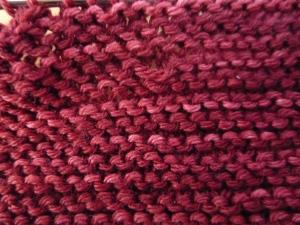Have you ever thought about where your dungarees came from, or how they’re made? In her 2006 book Fugitive Denim, Rachel Louise Snyder takes a trip around the world, stopping in unusual locales like Cambodia, Shenzhen, Turkey, and Italy, to better understand the denim industry and to look at a new generation of designers and manufacturers who are trying to correct some controversial labor standards and garment production issues.
While Snyder’s structure seems to mirror how a pair of jeans is made, she does tend to meander a bit. This is especially pronounced in the first half of the book, when her eye for detail gets stuck on some seemingly mundane issues (most notably, one cotton supplier’s love of coffee and cheesecake) that have minimal payoff later on. While a few early chapters have some fascinating information (such as one passage that details the pressure put on an Italian company to move all its production overseas), the book really gets rolling when Snyder decamps to Cambodia. In her depiction of two garment factory workers’ lives ably balances the ethical issues of offshore production, the long hours and low pay of sweatshop work, and the positive effects that employment has on these two girls.
While Fugitive Denim is not a capital-F feminist treatise, Snyder’s focus on the work of women (and how garment work is so associated with women) make it a thought-provoking read for those concerned with issues and problems facing women overseas. She mostly interviews female subjects, and she depicts their problems with things we take for granted in the States, such as education and balancing motherhood and employment. (Though some of the labor-related issues are not specifically tied to gender, one detail from the chapter in Cambodia was so unsettling that I had to put the book down for a few hours.) She also foregrounds many of the environmental issues related to denim production, and she writes accessibly about the risks and benefits of sweatshop labor. While Snyder mentioned the abuse and assault of female employees in Jordan and Sri Lanka, I would have been interested to see her pursue this a bit further.
The book begins and ends with a visit to the Edun showroom — the denim company designed by Rogan Gregory and funded by some dude named Bono. In writing about Edun, she gives us an idealistic image of how the industry could run, but she also details the company’s rarified customer base and its struggles to turn a profit.
If you’re interested in how something as mundane as a pair of jeans is made, you’ll want to read Fugitive Denim. Rachel Louise Snyder doesn’t provide readers with easy answers about whether they should abstain from buying products made in China, but her detailed look at industrialized textile production will help you appreciate many aspects of the production process.
—
New-to-me links:
I never miss an episode of Julie Klausner‘s hilarious and informative podcast “How Was Your Week?”, but this week’s interview with the director and stars of the documentary Advanced Style might be the push I need to start giving her money. I was really inspired by the conversation about aging, mortality, community, and hats.
This week I learned that Madewell bought its name and story from a textile mill and clothing company in Fall River, MA. While the brand’s bogus history made me even more disinclined to shop there, Dan Nosowitz’s article included a link to Save Khaki, USA, from whence I may purchase Gentleman Caller’s Christmas present.
“Why You Looked Weird in High School”: a breezy article that looks at performativity, style, adolescence, and Doin It Rong.
Debbie Harry’s Life in Ten Tee Shirts, and Amy Rose’s look back at the concert tee shirts of her life.
Also, ‘sup duderz. This past week knocked the wind out of me, and I’m glad to be back.







